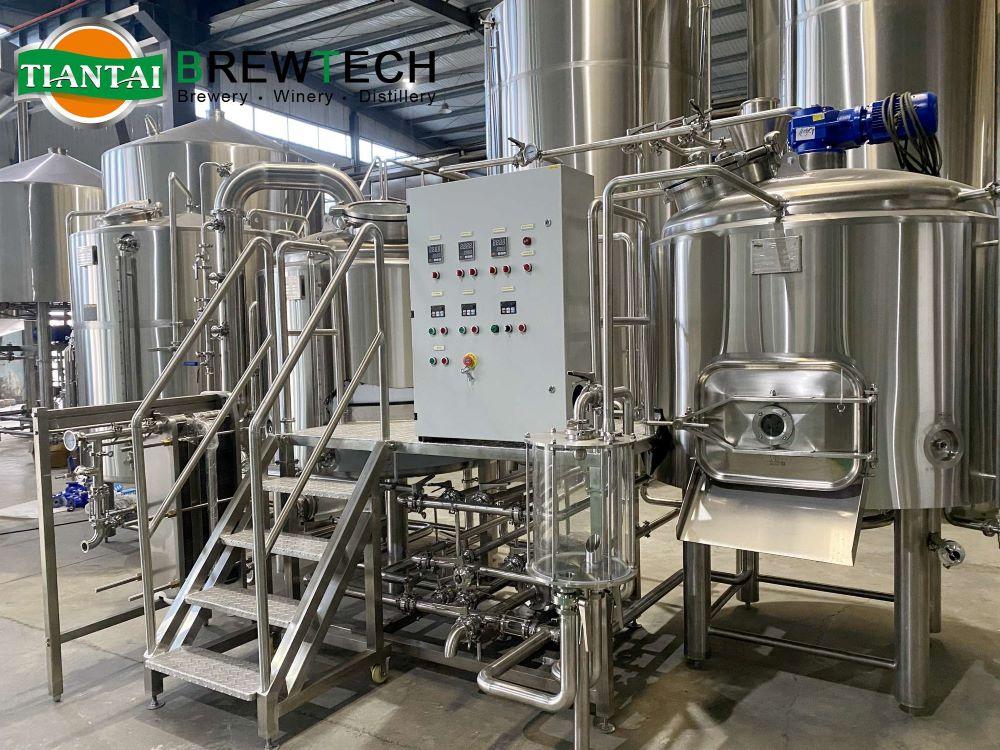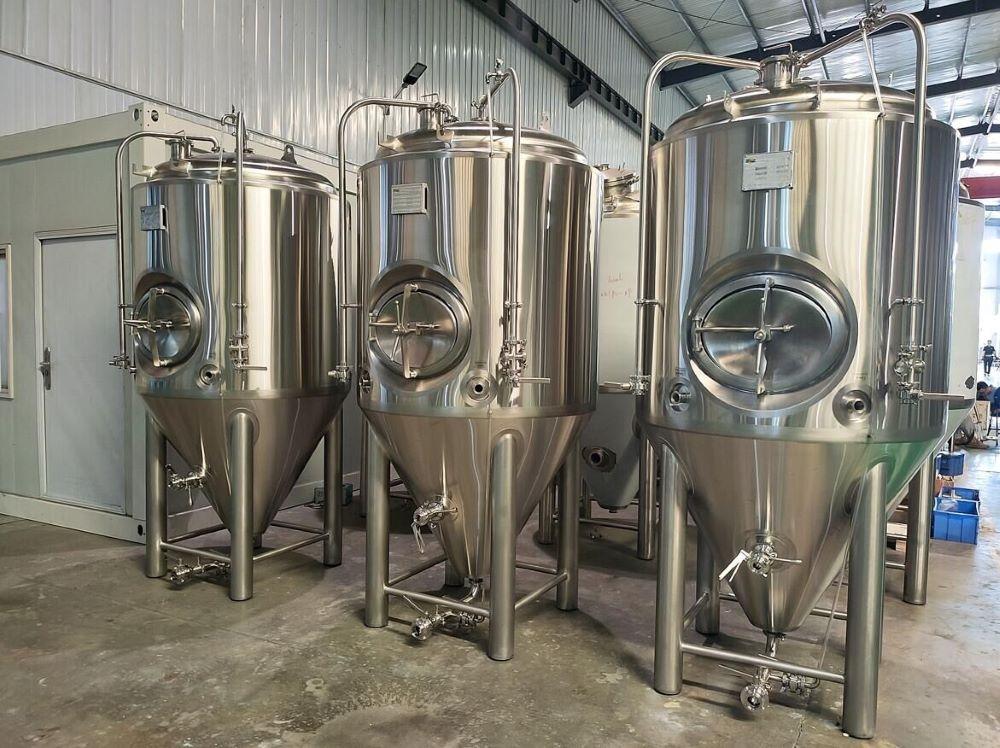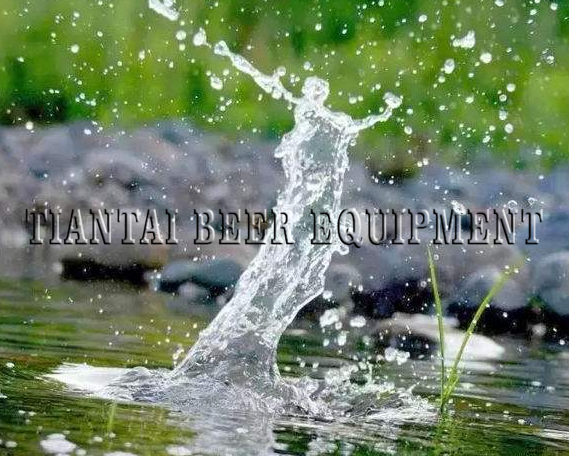Cold Coffee Brewing System Overview
Cold coffee brewing is a process where coffee grounds are steeped in cold or room temperature water for an extended period, typically between 12 to 24 hours. The result is a coffee concentrate that can be served cold or diluted with water, milk, or other liquids. Cold brew coffee is known for being less acidic, smoother, and having a richer, more robust flavor compared to traditional hot-brewed coffee.The cold coffee brewing system involves specialized equipment designed to handle the cold extraction process efficiently and consistently. As the global demand for cold brew coffee continues to grow, coffee shops, breweries, and beverage companies are adopting advanced cold brewing systems for both small-scale and large-scale production.
This guide covers the various aspects of cold coffee brewing systems, including their specifications, functions, and the advantages of using TIANTAI equipment for cold coffee production.
1. Cold Coffee Brewing System Specifications
1.1 Brewing Capacity
The capacity of cold brew systems can vary from small, manual systems designed for personal or small café use to large, automated systems for commercial-scale production. The typical brewing capacity is often measured in gallons or liters, ranging from 1-2 gallons for smaller systems to several hundred gallons for industrial setups.1.2 Material Construction
Cold brew systems are typically made from high-quality stainless steel, such as SUS304 or SUS316, due to its corrosion resistance and ease of cleaning. Stainless steel is the preferred material because it maintains the purity of the coffee and prevents contamination from metallic leaching, which could alter the flavor profile.· SUS304: Suitable for most cold brew systems as it provides excellent durability, corrosion resistance, and is cost-effective.
· SUS316: Often used in more specialized systems where higher resistance to acidic environments (such as coffee) is needed, as it contains molybdenum which increases corrosion resistance.
1.3 Brewing Time
Cold brew coffee typically requires a brewing time of 12 to 24 hours. However, different systems offer varying levels of control over the extraction time. Commercial systems often provide programmable timers and automated controls that can be adjusted to the desired extraction period, allowing operators to standardize and customize their brewing process.1.4 Filtration System
Filtration is a crucial part of cold brew coffee production. A well-designed filtration system ensures that the coffee grounds are fully immersed in water during the extraction process while preventing sediment from ending up in the final concentrate. Common filtration types include:· Metal Mesh Filters: These reusable filters are typically made from stainless steel and offer medium filtration levels.
· Paper Filters: Disposable filters that provide fine filtration but require replacement after each use.
· Inline Filters: More advanced systems use inline filtration mechanisms to remove sediments, oils, and fine particles after brewing.
1.5 Cooling and Temperature Control
Cold brew systems generally operate at room temperature, but certain systems have integrated cooling mechanisms to maintain the brewing process within a consistent temperature range. Temperature consistency is essential for commercial producers looking to maintain a standardized flavor profile across batches.· Glycol Cooling Jackets: Some large-scale systems use glycol cooling jackets around the brew tanks to maintain temperature control during brewing. This ensures the system operates at optimal conditions for cold extraction.
1.6 Cleaning and Sanitation Features
Cold brew systems should be easy to clean and sanitize. Many advanced systems come with CIP (Clean-in-Place) systems that allow operators to thoroughly clean tanks, pipes, and filters without dismantling the entire setup. The use of stainless steel also makes cleaning simpler and ensures a hygienic brewing environment.1.7 Automation
Advanced cold brew systems come with automation features, such as programmable extraction times, automatic filtration, and integrated pumps for transferring liquid between tanks. Automation reduces labor costs and ensures consistency across batches, which is crucial for large-scale production.1.8 Pump and Valve Systems
Commercial cold brew systems often use high-quality pumps and valves to transfer coffee between tanks during the brewing and filtration stages. These systems need to be durable and food-grade to ensure they do not negatively affect the coffee’s quality or flavor.
2. Functions of Cold Coffee Brewing Systems
2.1 Extraction of Coffee Concentrate
The primary function of a cold coffee brewing system is to extract the coffee concentrate. This process involves steeping coffee grounds in water for an extended period, allowing the water to absorb the flavors and compounds from the beans without the use of heat.Cold extraction preserves the integrity of coffee oils and reduces the acidity compared to hot brewing methods. It also produces a smoother, richer taste.
2.2 Filtration and Clarification
Once the extraction process is complete, the coffee concentrate is filtered to remove any sediment or fines (tiny coffee particles). This is crucial for achieving a clean, smooth cold brew that’s ready to be bottled or diluted.Some advanced systems include multi-stage filtration, where the coffee is passed through various levels of mesh or paper filters to achieve the desired clarity. For commercial production, this filtration stage ensures consistency across large batches.
2.3 Concentration Control
Cold brew systems allow for concentration control, meaning operators can choose to brew stronger or weaker concentrates depending on the desired product. Stronger concentrates can be diluted with water, milk, or other liquids before serving, while weaker concentrates may be consumed as-is.2.4 Batch Production
Cold coffee brewing systems are designed to handle batch production, which is essential for commercial operations. Multiple batches can be brewed simultaneously in different tanks, or large systems may be designed to brew large quantities in a single batch.2.5 Flavor Preservation
Since cold brew coffee is steeped in cold or room temperature water, it tends to preserve the natural flavors of the coffee beans better than hot brewing methods. This makes cold brew ideal for showcasing high-quality, single-origin beans with distinct flavor profiles.2.6 Integration with Other Equipment
Many cold brew systems can be integrated with additional equipment, such as kegs, bottling lines, or nitro infusion systems. This makes it easier for commercial operations to package cold brew coffee for distribution in cafes, grocery stores, or through direct sales to consumers.
3. Advantages of TIANTAI Cold Coffee Brewing Equipment
TIANTAI, a leading manufacturer of brewing and beverage production equipment, offers specialized cold coffee brewing systems designed for both small-scale and large-scale operations. Our equipment is known for its durability, efficiency, and customization options, making it a top choice for businesses looking to enter or expand the cold brew coffee production.3.1 Customizable Solutions
TIANTAI offers customizable cold brew systems tailored to the specific needs of each client. Whether it’s a small café looking for a compact system or a large-scale coffee producer requiring industrial-level production, TIANTAI can design equipment to meet unique specifications. Customizable options include tank size, filtration systems, cooling mechanisms, and automation features.3.2 High-Quality Construction
All TIANTAI cold brew systems are made from high-grade stainless steel (SUS304 and SUS316), ensuring long-lasting durability and corrosion resistance. This is especially important in the coffee industry, where acidic compounds can cause wear and tear on equipment over time. The use of stainless steel also guarantees that the coffee’s flavor remains untainted by any metallic elements.3.3 Efficiency and Consistency
TIANTAI’s cold brew systems are engineered for maximum efficiency, reducing the time and labor needed to produce high-quality cold brew coffee. Our automated features, such as programmable timers, automated filtration, and integrated pumps, help ensure that each batch is brewed to the same standard of quality. This is crucial for businesses that need to maintain consistency across large batches for commercial distribution.3.4 Sanitation and CIP Systems
TIANTAI understands the importance of cleanliness in the beverage production industry. Our cold brew systems are designed with easy-to-clean components and often come equipped with Clean-in-Place (CIP) systems. These systems allow operators to clean and sanitize the equipment quickly and thoroughly, ensuring a hygienic production environment and reducing downtime between batches.3.5 Technical Support and After-Sales Service
TIANTAI provides excellent technical support and after-sales service to our clients. This includes assistance with installation, training on how to operate and maintain the equipment, and ongoing support for any technical issues that may arise. This commitment to customer service makes TIANTAI a trusted partner for businesses entering the cold brew coffee market.3.6 Energy-Efficient Design
Many of TIANTAI’s cold brew systems are designed with energy efficiency in mind. This includes the use of insulated tanks, efficient cooling systems, and automated processes that reduce the need for manual labor. These features help businesses save on energy costs while maintaining high levels of productivity.3.7 Scalability
TIANTAI’s cold brew systems are designed to scale with the growth of a business. For small producers, our equipment can be upgraded or expanded as production needs increase, allowing businesses to invest in the future without needing to replace the entire system. This scalability is one of the key advantages of choosing TIANTAI equipment for cold brew production.3.8 Global Recognition
TIANTAI has built a strong reputation in the global beverage industry. Our equipment is used by breweries, distilleries, and coffee producers around the world, and they have experience working with clients in a wide range of markets. Our global recognition ensures that TIANTAI systems are trusted for our quality and reliability.
Turnkey Solution For Cold Coffee Brewing
The cold coffee brewing system is an essential tool for businesses looking to produce smooth, flavorful cold brew coffee on a commercial scale. With a range of options available—from small-scale manual systems to large automated setups—cold brew systems are designed to meet the needs of both small cafés and large. TIANTAI Team can provide you a turnkey solution with a complete cold coffee brewing system to help your coffee brewing business. If you need any coffee brewing equipment, please feel free to contact with TIANTAI. Thank you!Daisy Cai
[email protected]



.jpg)


Get In Touch